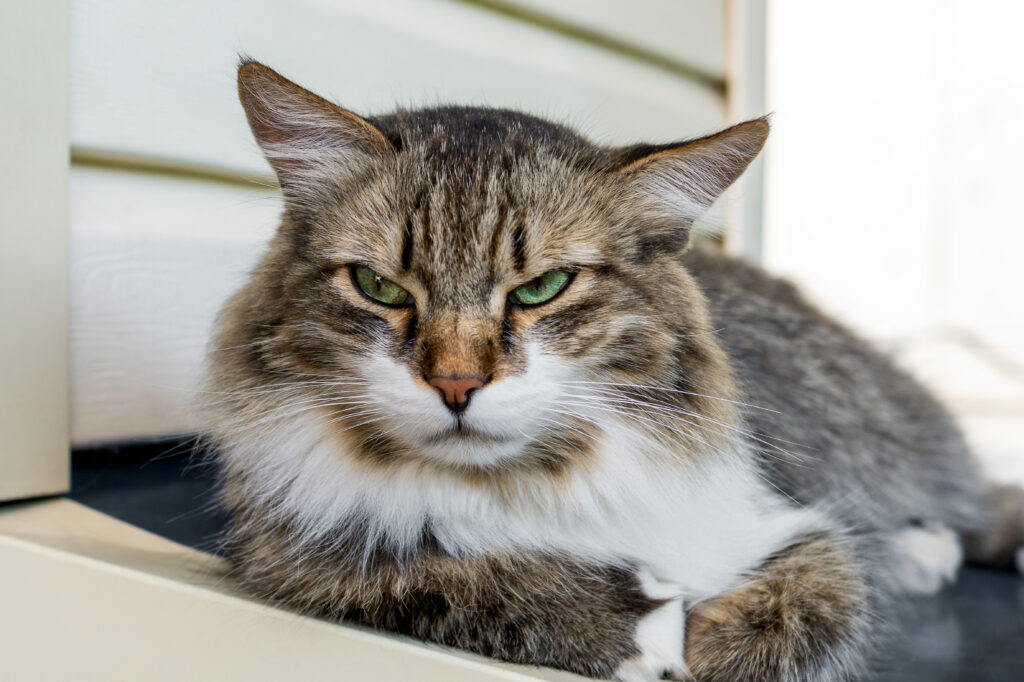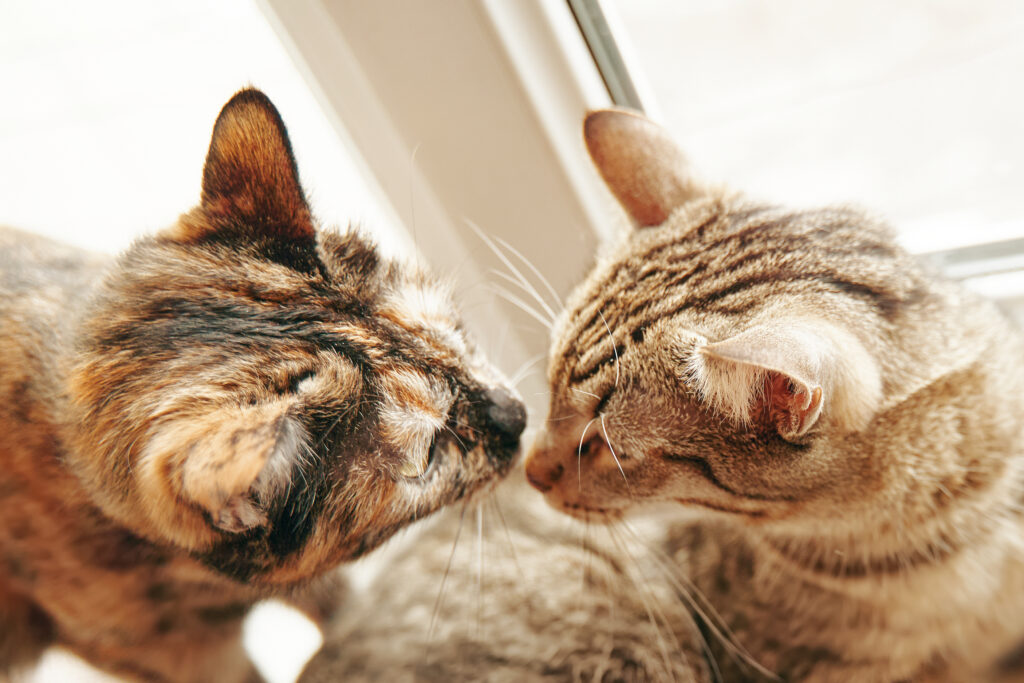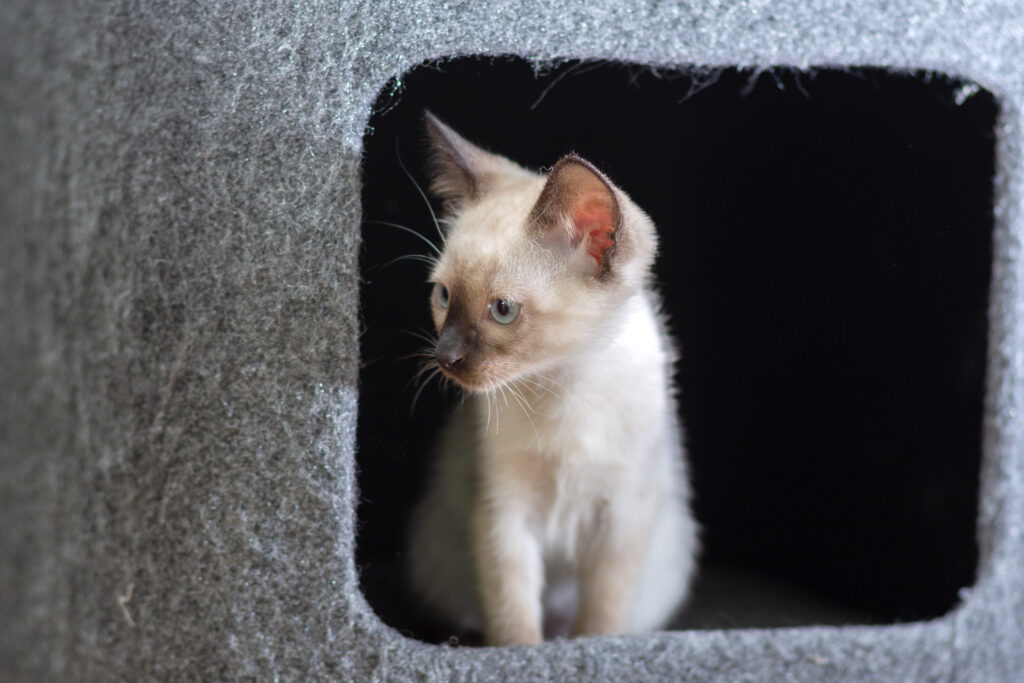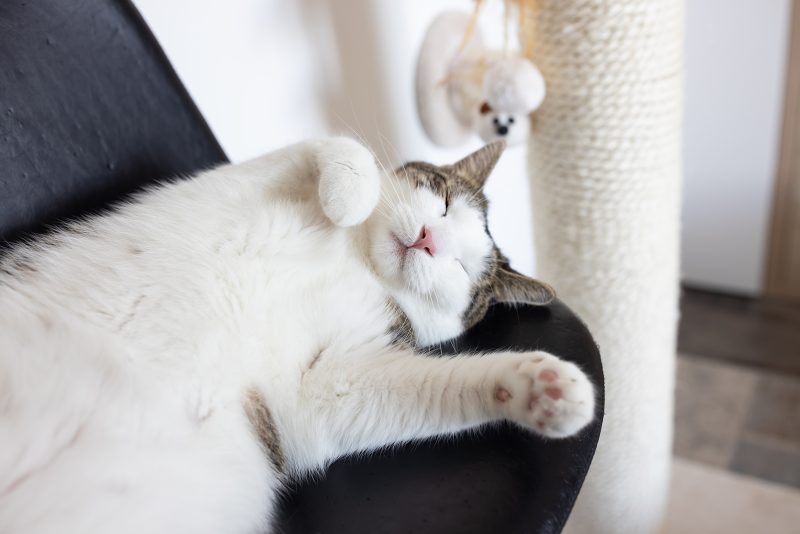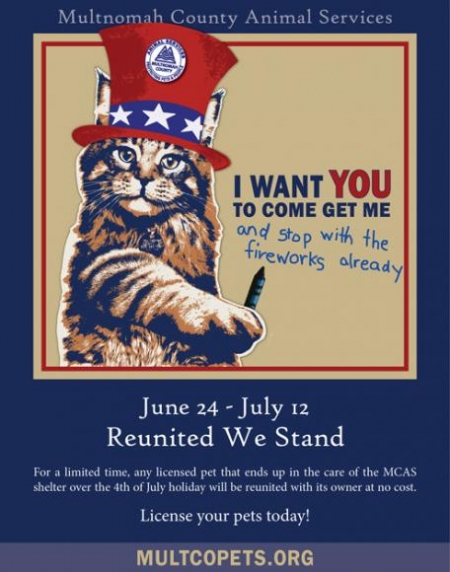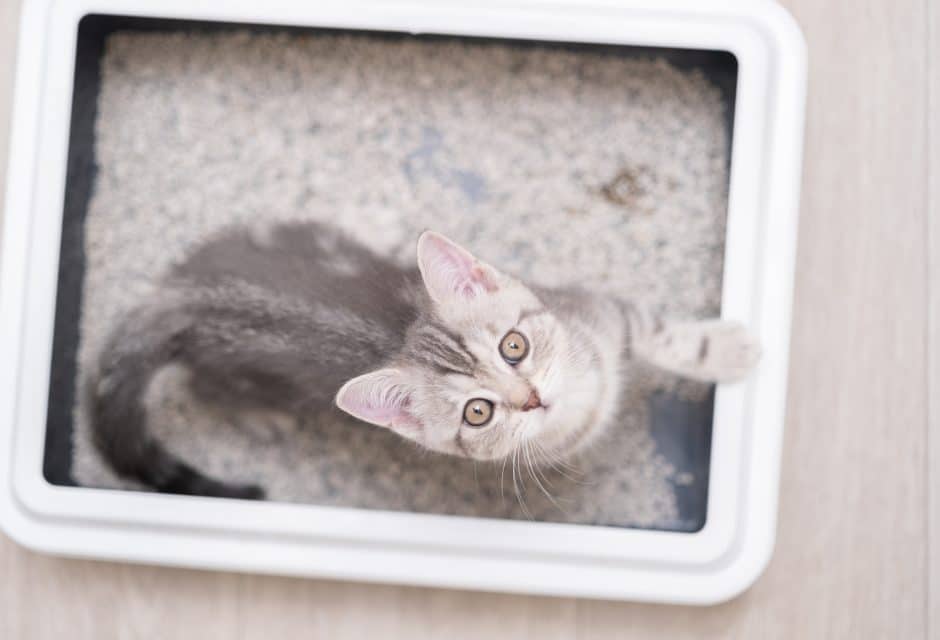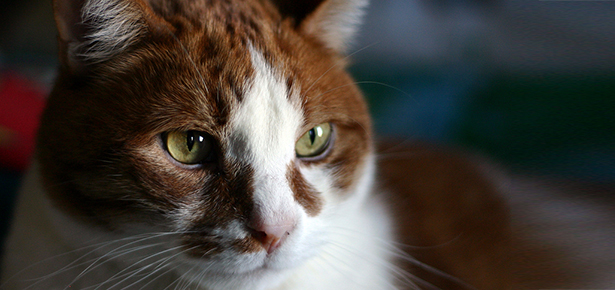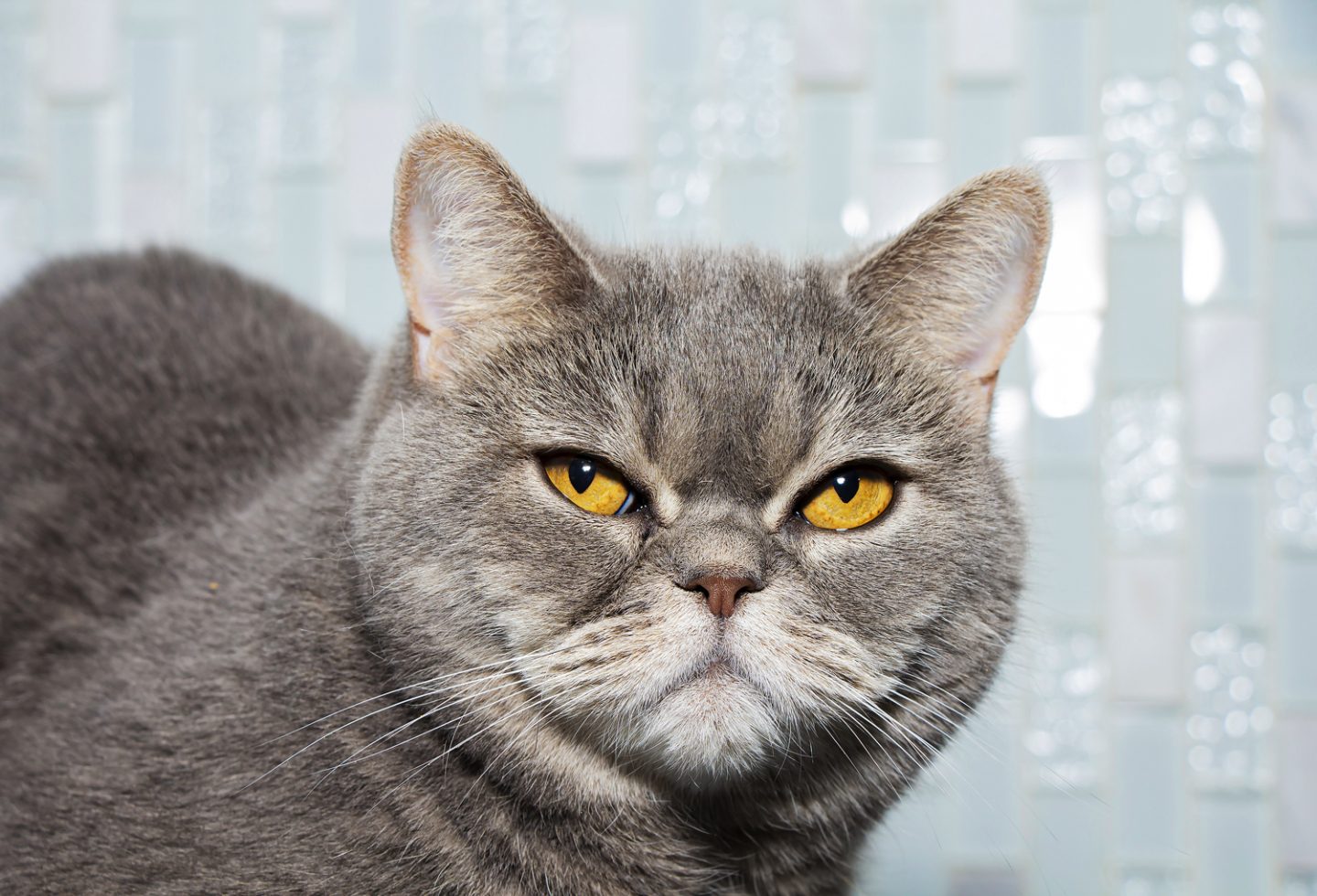
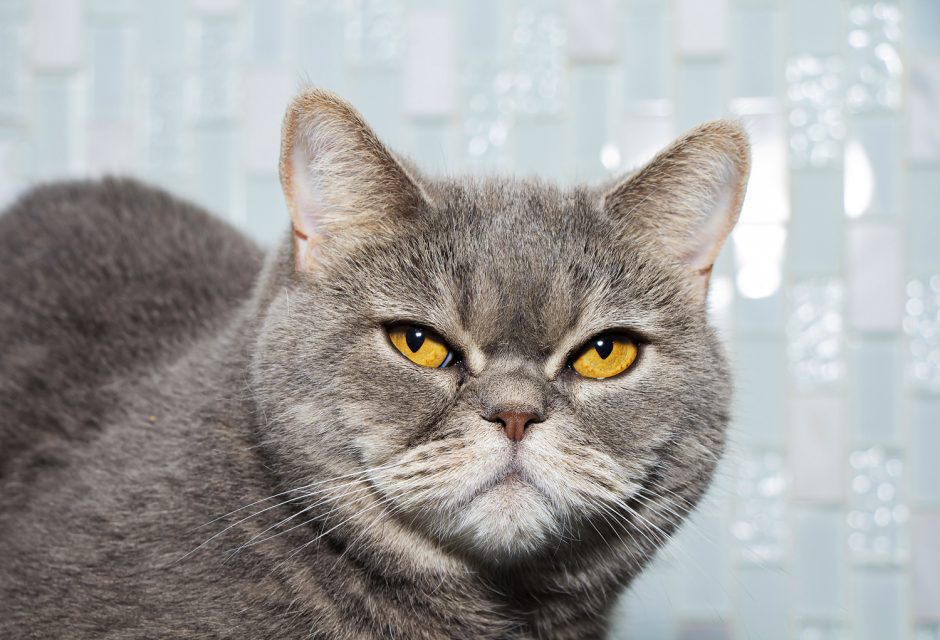
Has Your Cat’s Behaviour Changed From Friendly to Irritable?
For those who don’t like or understand cats, the answer to the question in the title might simply be because it’s a cat, but for those of you who share your life with a beloved feline family member, a change in behaviour, especially when a friendly, loving cat becomes irritable and grumpy, can be confusing and unsettling. So, let’s look at some of the reasons a cat might display a little Jekyll and Hyde behaviour.
Pain or Illness
This is the first thing that must be ruled out before assuming this is merely a behaviour issue. Cats are masters at masking pain and illness but if it’s allowed to progress, it most certainly can result in a change in personality. Chronic pain can wear anyone down physically, emotionally and mentally. Perhaps the cat is displaying irritability when handled due to pain. If ill, the cat may seek out places to be left alone and become irritable when family members attempt to interact, hold or pet her.
A veterinary visit is needed to make sure there isn’t an underlying medical issue and to make sure there hasn’t been an injury. It doesn’t have to be an obvious injury to cause extreme discomfort. For example, the cat may be in pain when walking due to a toenail that hasn’t been trimmed and is growing back toward the pad, or maybe as the cat ages, arthritis is starting to set in and results in stiff and painful joints. Don’t overlook pain or illness as a reason for a behavior change.
Multi-cat Issues
If you have a multi-cat household where there is tension, it’s not unusual for a cat to become irritable due to the constant struggle to feel safe and to protect preferred areas/resources. You may be attempting to interact with a cat while she’s trying to stay on guard or maybe she has just been in a tense stand-off with a cat companion. Address multi-cat issues to keep the lid on stress. Make sure there are adequate resources available for everyone and that those resources (feeding stations, litter boxes, sleeping areas, scratching surfaces) are scattered throughout the home so one cat doesn’t have to risk a confrontation by having to pass another cat’s area in order to use the litter box or access a food bowl.
Abrupt Changes
Cats are creatures of habit and take comfort in familiar routines and in their familiar environment. Irritability may be due to confusion from an abrupt change in the household or in the cat’s schedule. For some cats, it can be unsettling just to have a minor change in the environment such as a rearrangement of some furniture. Major changes such as the addition of a new pet or family member in the home can cause much fear and confusion and that can lead to a cat seeming irritable. A move to a new home or major upheaval in the environment can create ongoing stress which can show up as a change in the cat’s normal temperament.
Ease your cat through life’s changes to help her adjust. Gradual exposure to change in a low-key, calm way is the least stress-inducing method. Whether you’re about to bring home a new cat companion or you’re getting ready to move to a new home, ease your cat through the process by taking baby steps.
Over-Stimulation
Being petted may be something your cat enjoys but she may have preferences in terms of where on the body it feels good and for how long she wants that interaction. Pay attention to your cat’s body language as you pet areas and if she seems to stiffen up, shift her body, meow or try to move away, then she’s telling you it doesn’t feel good. Even if being petted in certain spots is enjoyable, it can cause over-stimulation. This is commonly seen when the base of the tail is petted. Stick to the areas you know your cat enjoys and stop petting at the first sign she is coming close to reaching her tolerance level.
Neglecting Your Cat’s Body Language Signals
Just as it is with a person, there are times when a cat enjoys company and there are times when she may want to be left alone. A seemingly abrupt change in mood can occur if you try to pick up and hold your cat if it’s during those times when she prefers to not engage. She may be sleeping, eating, or even just looking out the window at the birds. If her body language is saying keep your distance, be respectful of that.
Not Enough Personal Space
Cats need the option to hide and find refuge in quiet places. If the environment is chaotic or if you have a large family, your cat needs places where she can chill out and get away from household noise and household traffic. That applies to having places to nap quietly, litter box areas that are not in the middle of noisy areas, secure feeding areas, and lastly, hiding places so she can become invisible.
Punishment
If a cat has been punished physically or verbally, it often results in fear and may lead to her displaying defensive aggression. Don’t ever punish a cat for what seems to be a misbehavior. This method is inhumane and totally counter-productive. Behaviors are displayed for reasons that make sense to the cat so it’s important to find the reason for the behavior so you can make necessary adjustments. Any punishment will almost always lead to a deterioration of the bond you share with your cat.
The Bottom Line
Figure out the cause of the cat’s change in mood and don’t just label your cat as grumpy, moody or irritable. The sooner you do your detective work, the sooner you and your cat can get back on track in your relationship.
Pam Johnson-Bennett
Certified Cat Behaviour Consultant & Best-Selling Author
Pam Johnson-Bennett is a certified cat behaviour consultant and best-selling author of 8 books on cat behavior. She starred in the Animal Planet series Psycho Kitty, seen in Canada and the UK. She was a vice president of the International Association of Animal Behavior Consultants and founded their cat division. She has served on an advisory board for the American Humane Association as well as other animal welfare organizations.
Pam is considered a pioneer in the field of cat behaviour consulting, having started her career in 1982. Some of her books have been used as textbooks for behaviour courses and she has influenced many practicing in the field today. Her book, Think Like a Cat, has been referred to as the cat bible.
Pam owns Cat Behaviour Associates, located in Tennessee. She lives with her husband, two children, a rescued cat, and a rescued dog.
Join the newsletter and never miss out on cat content again!
"*" indicates required fields
By clicking the arrow, you agree to our web Terms of Use and Privacy & Cookie Policy. Easy unsubscribe links are provided in every email.





